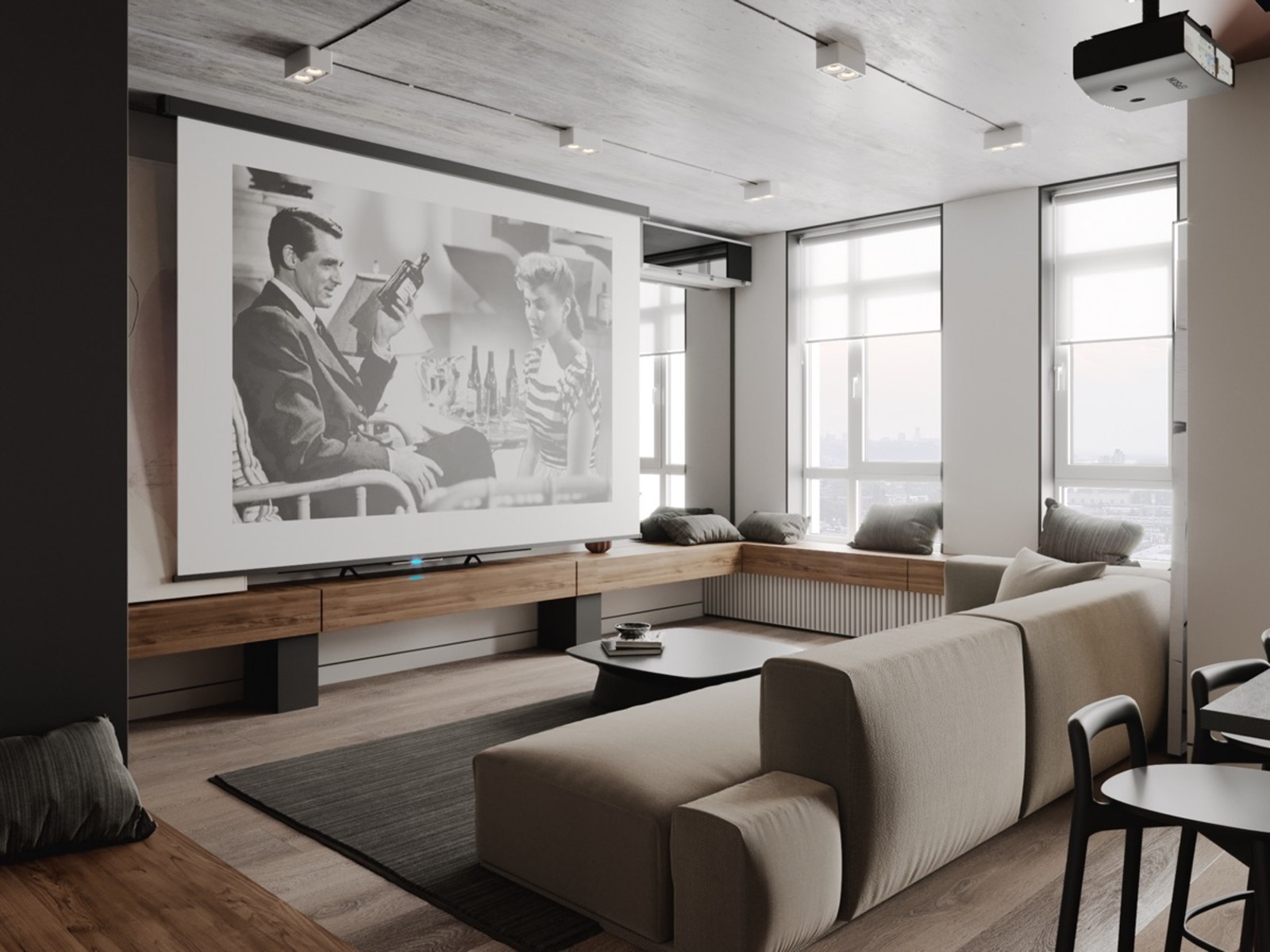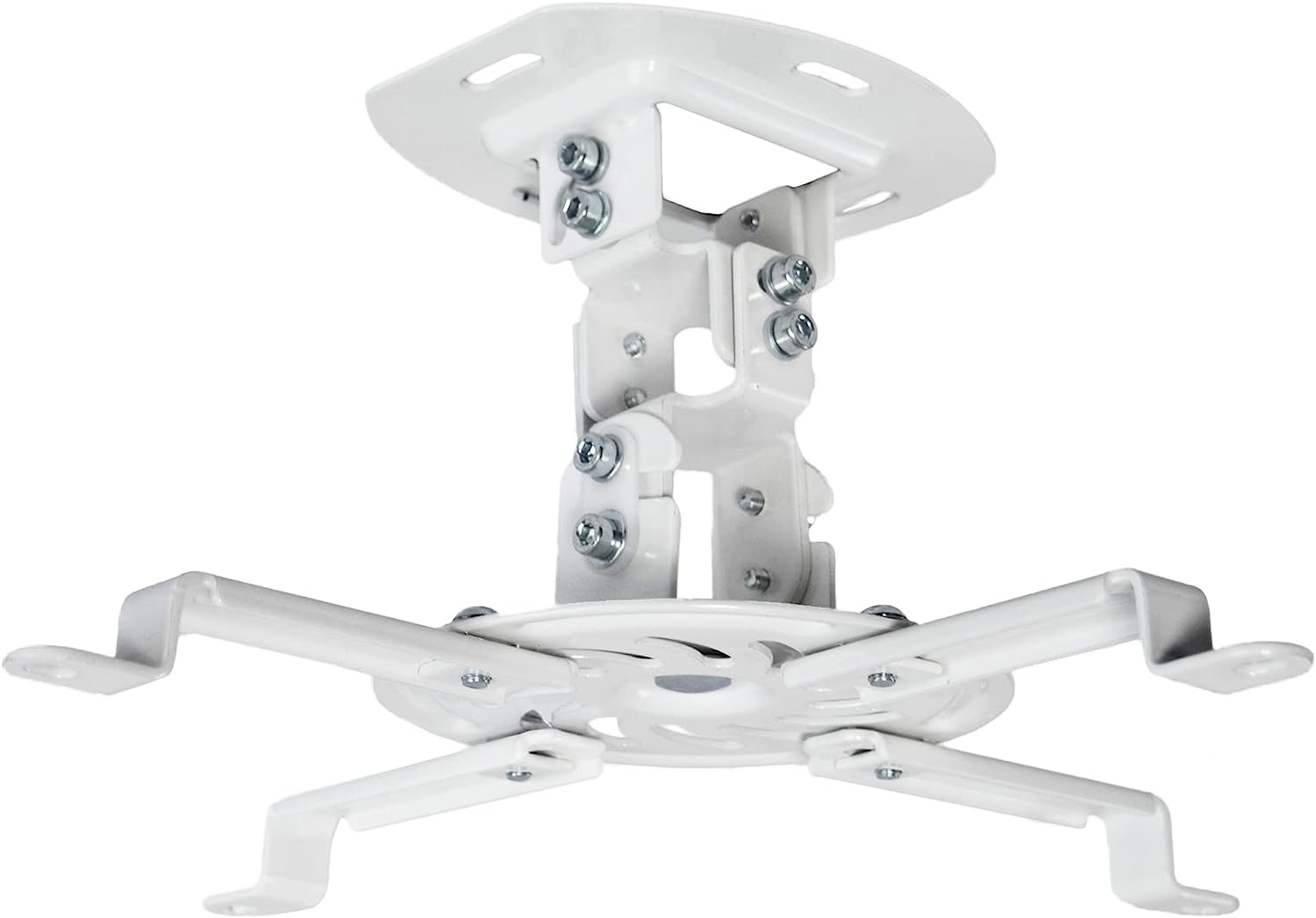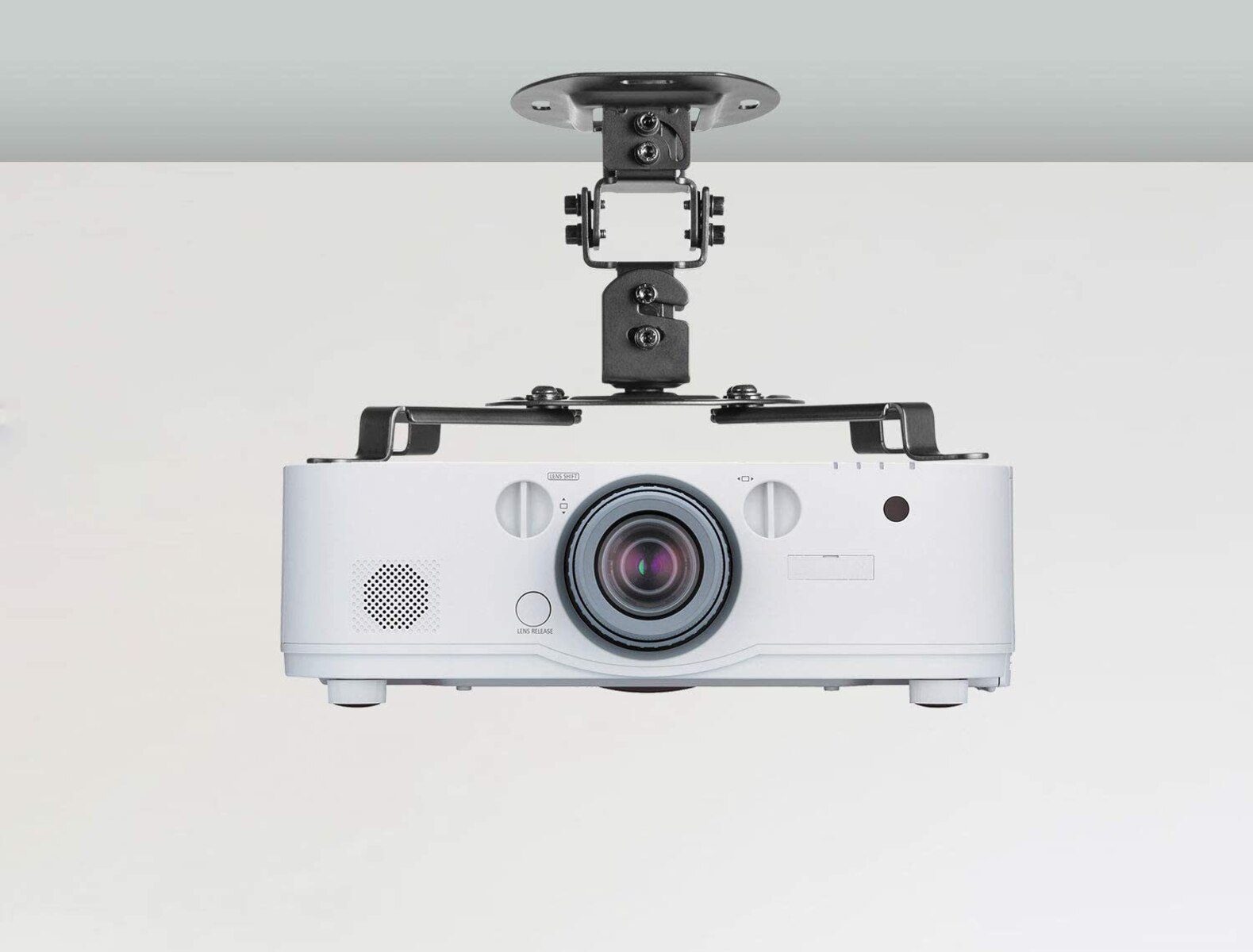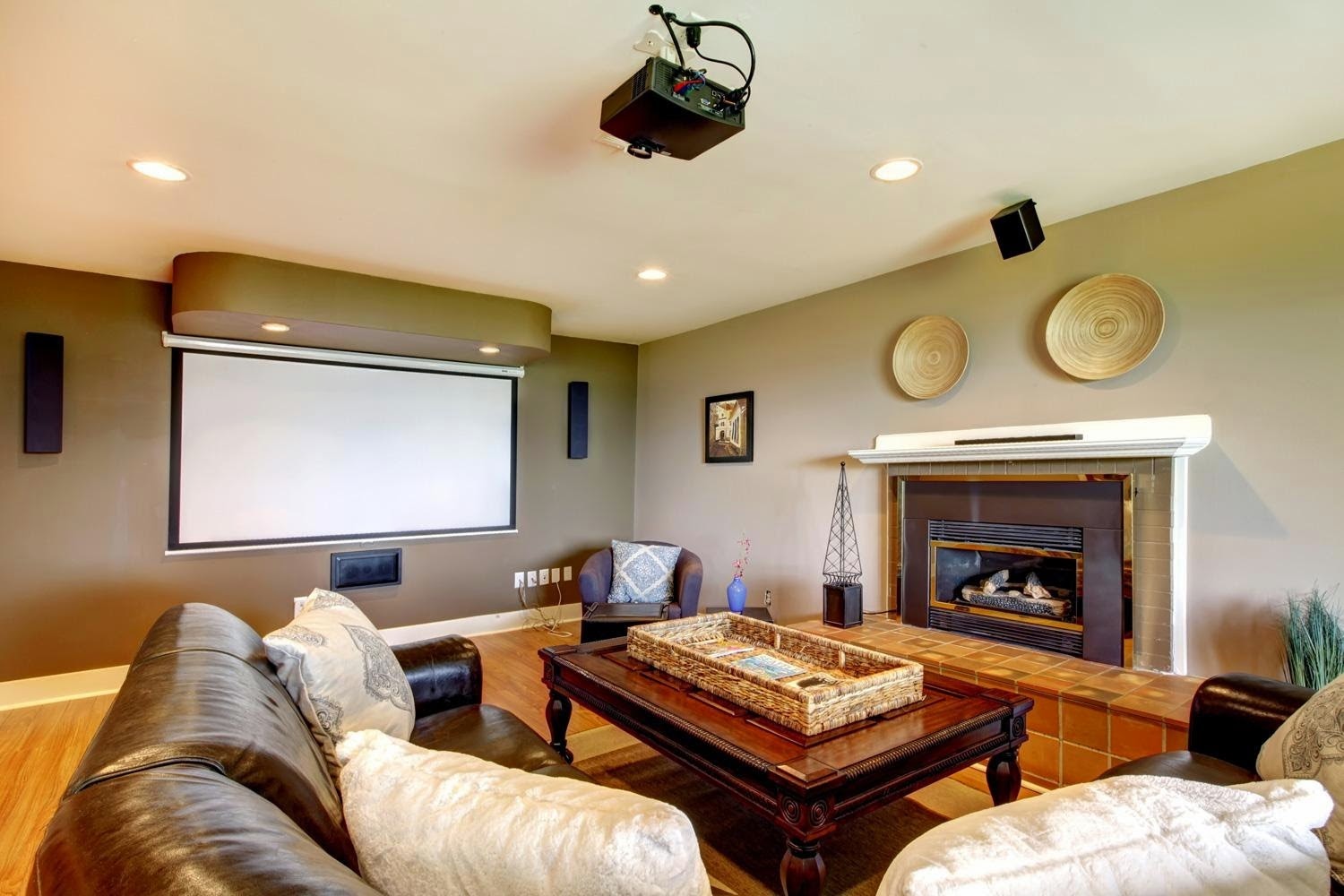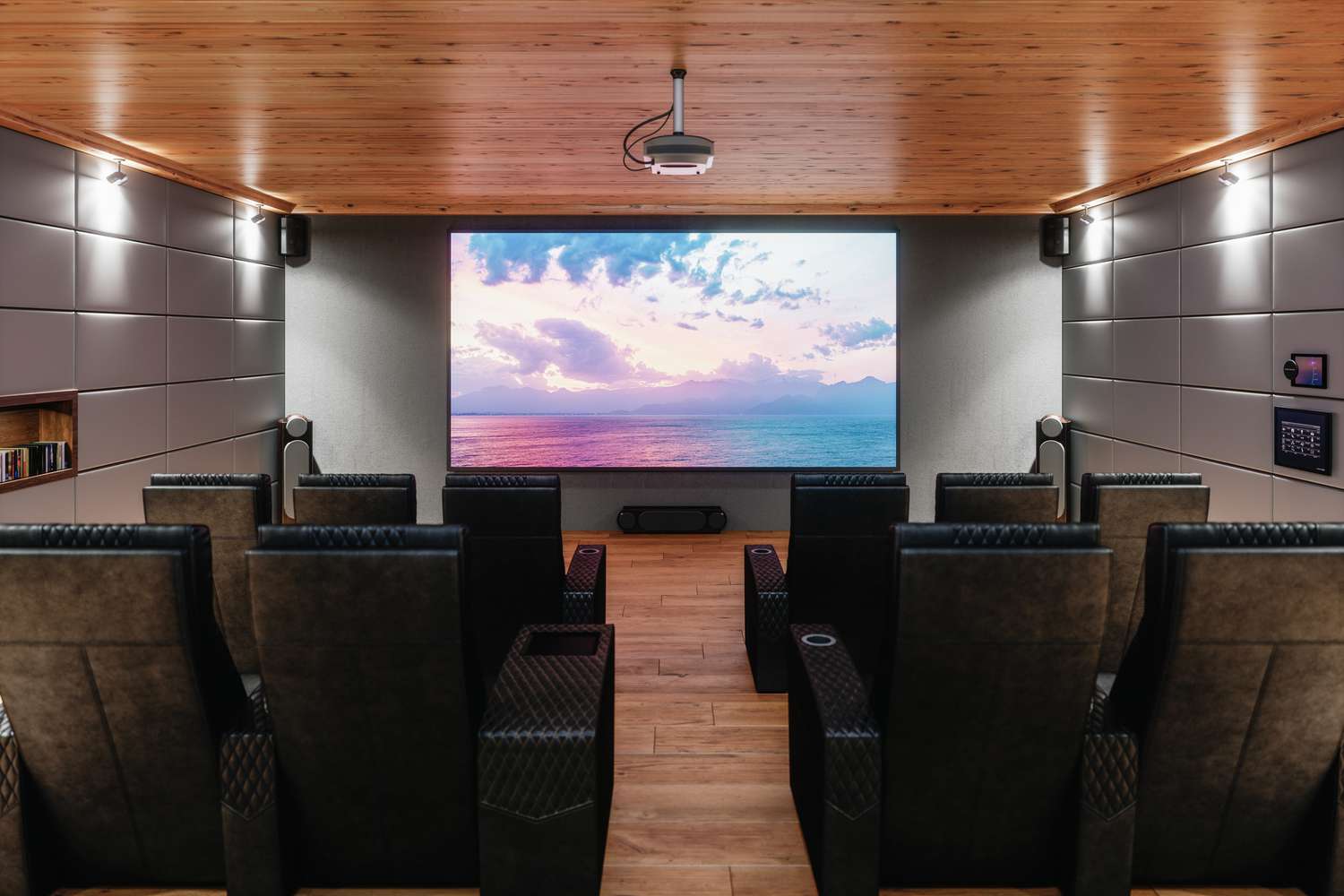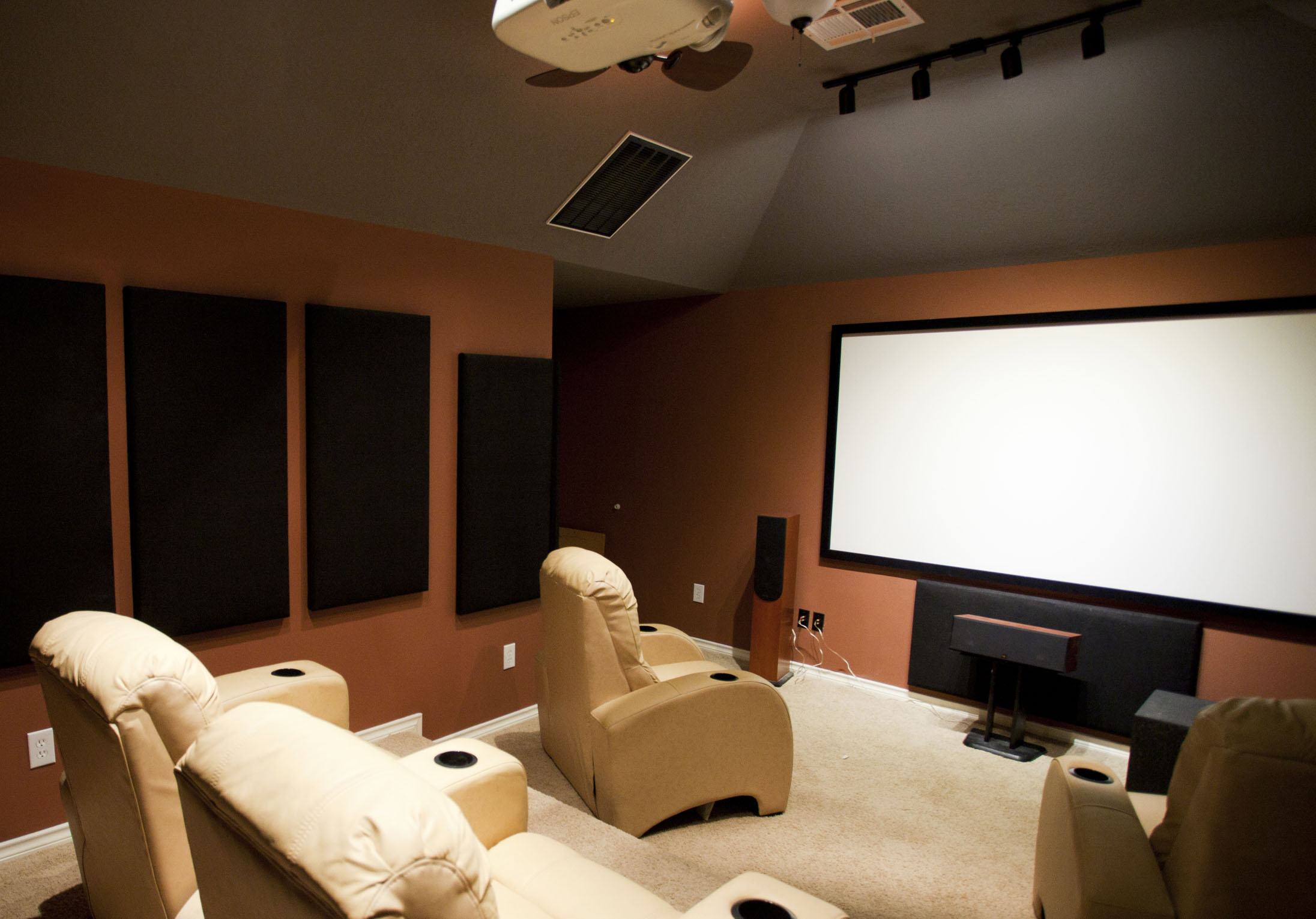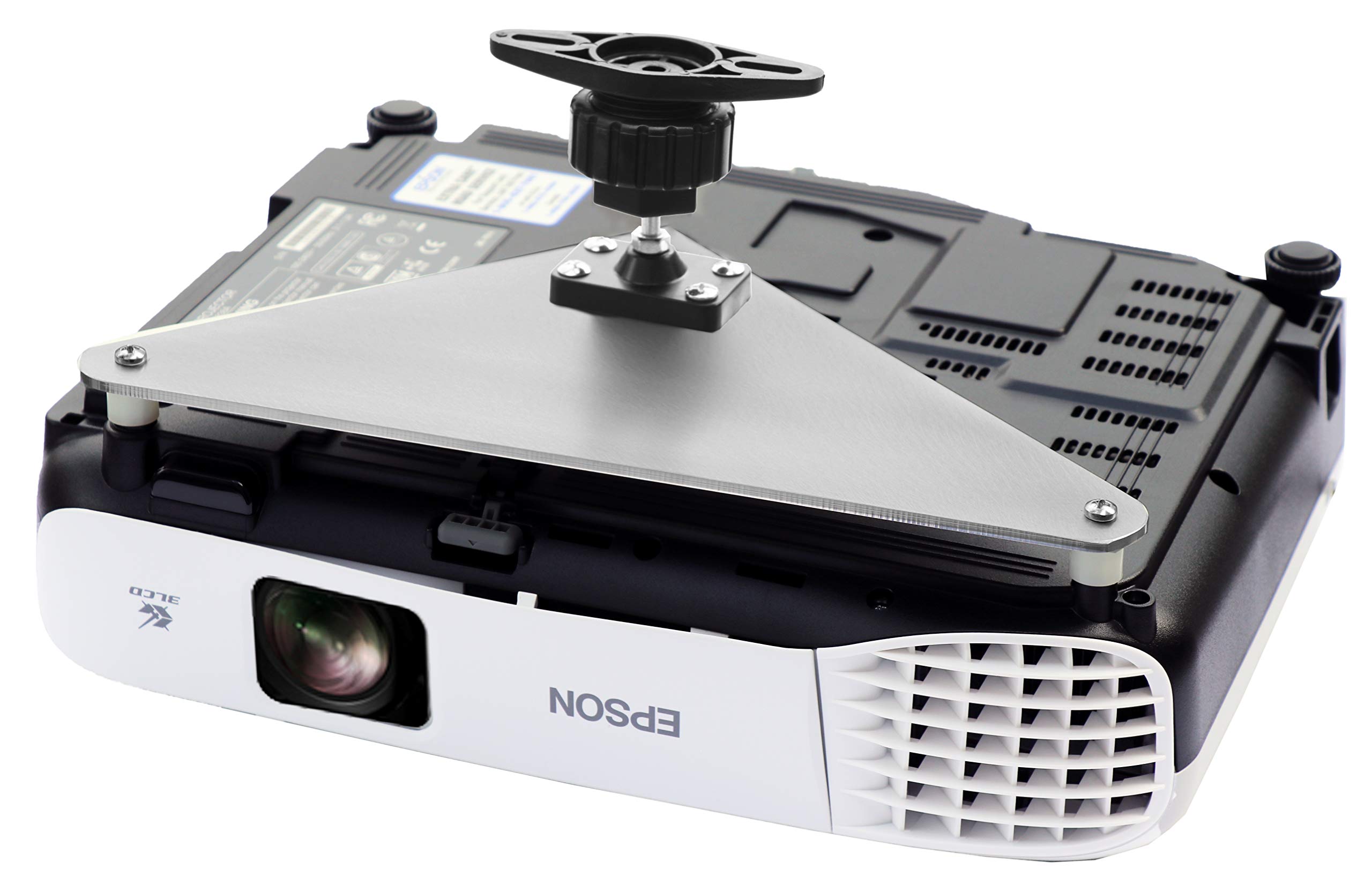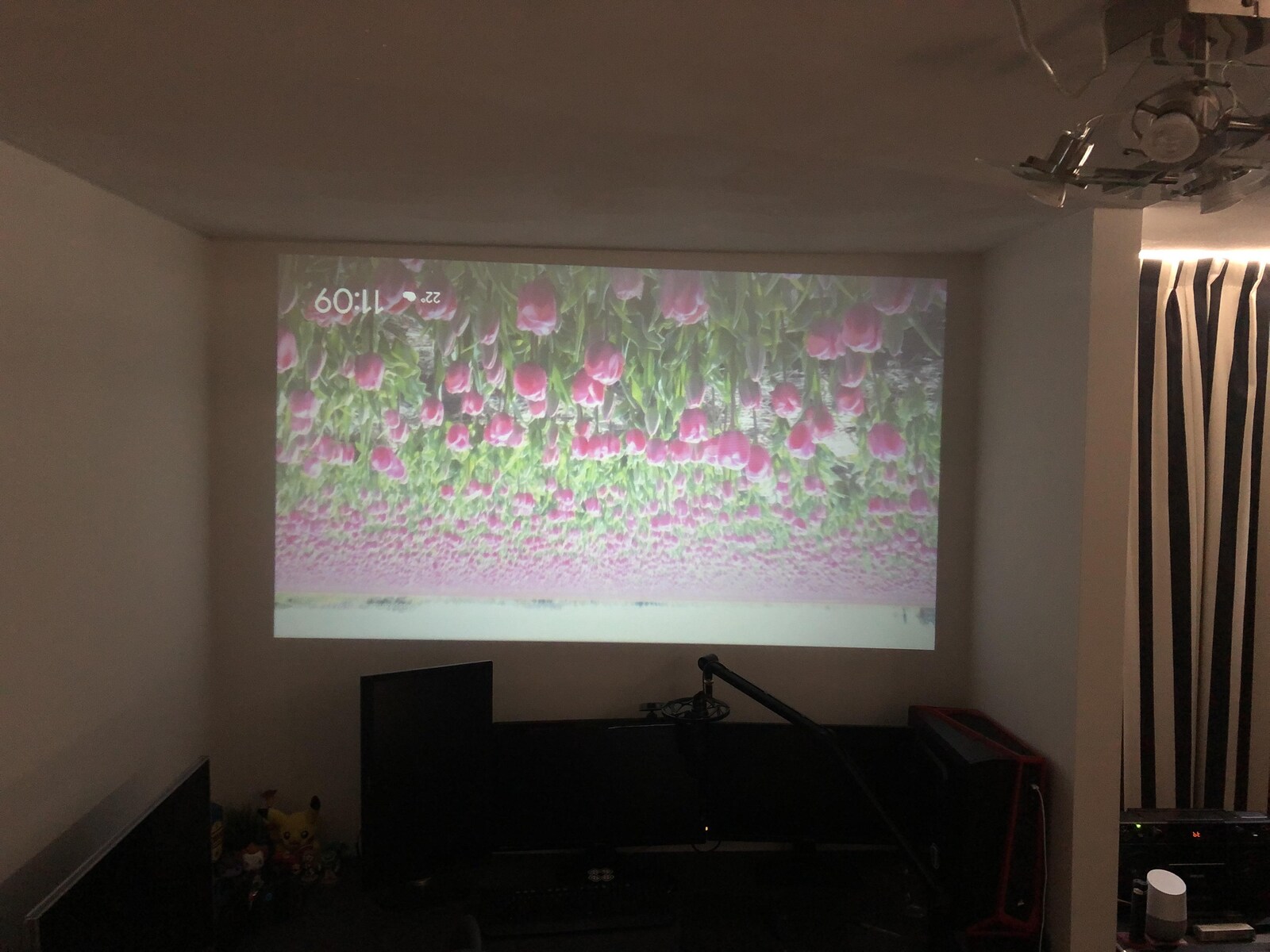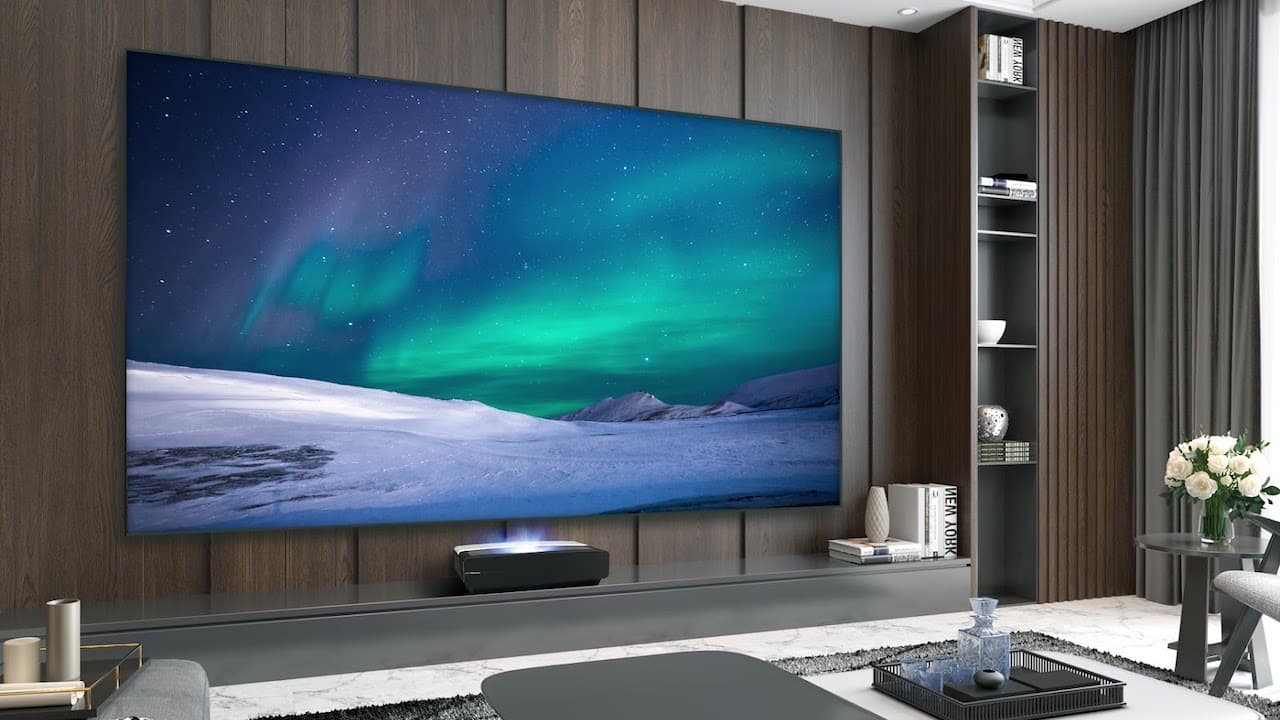Introduction
A projector screen can enhance your viewing experience by providing a larger and clearer image for presentations, movies, or gaming. If you have a drop ceiling in your space, mounting a projector screen can be a practical and aesthetically pleasing option. By following a few simple steps, you can easily mount a projector screen on a drop ceiling and enjoy a cinematic experience in the comfort of your own home or office.
While the process may seem intimidating at first, with the right tools and techniques, you can successfully mount a projector screen on a drop ceiling without any hassle. This article will guide you through the step-by-step process, providing clear instructions on how to measure the area, choose the right projector screen, prepare the drop ceiling, install the mounting brackets, and attach the screen to the brackets.
Before getting started, it’s essential to note that every drop ceiling is different, so it’s essential to follow the manufacturer’s instructions for your specific projector screen and mounting brackets. This will ensure that you achieve a secure and stable installation.
So, whether you’re setting up a home theater, creating a presentation room, or simply want the flexibility of a movable screen, let’s dive into the details of how to mount a projector screen on a drop ceiling.
Step 1: Measure the area
Before you begin the process of mounting a projector screen on a drop ceiling, it’s crucial to measure the area where you plan to install the screen. This step is essential to ensure that the screen will fit perfectly and provide an optimal viewing experience.
Start by identifying the ideal location for the screen. Consider the viewing angle, available space, and any obstructions that may affect the projection. Ensure that the screen will be at an appropriate height for comfortable viewing.
Next, measure the width and height of the space where the screen will be installed. Take accurate measurements, as this will determine the size of the screen you need. Consider the aspect ratio of the screen (e.g., 16:9 or 4:3) depending on your preference and the type of content you will be displaying.
Additionally, measure the distance between the drop ceiling and the floor. This will help determine the length of the mounting brackets needed to ensure that the screen hangs at the desired height.
It’s also crucial to consider the weight of the projector screen. Ensure that the drop ceiling can support the weight of the screen and the mounting brackets. Consult the manufacturer’s specifications and guidelines for the maximum weight capacity of your particular drop ceiling system.
By accurately measuring the area where the projector screen will be installed, you will have the necessary information to select the right size screen and mounting brackets, ensuring a secure and comfortable setup.
Step 2: Choose the right projector screen
Choosing the right projector screen is essential to ensure the best viewing experience for your specific needs. There are several factors to consider when selecting a projector screen for mounting on a drop ceiling.
Firstly, consider the type of material used for the screen. The most common options are matte white, grey, or high-gain screens. Matte white screens are ideal for general purpose use, providing a balanced image without any hotspots or color shifts. Grey screens are suitable for rooms with ambient light, as they enhance contrast and improve black levels. High-gain screens are designed for environments with significant ambient light, providing increased brightness and image reflectivity.
Next, consider the aspect ratio of the projector screen. The aspect ratio refers to the proportion between the screen’s width and height. The two most common aspect ratios are 16:9 (widescreen) and 4:3 (standard). Choose the aspect ratio that matches the content you will be displaying. For home theaters and multimedia presentations, a 16:9 aspect ratio is typically preferred.
Another factor to consider is the screen’s size. The size of the screen will depend on the available space, viewing distance, and personal preference. It’s essential to choose a size that will provide an immersive viewing experience without overwhelming the room or compromising image quality.
Additionally, consider the screen’s mounting options. Ensure that the projector screen you choose is compatible with a drop ceiling mounting configuration. Look for screens that come with mounting brackets or have options for easy installation on a drop ceiling.
Lastly, consider the quality and reputation of the brand before making your final decision. Research different brands and read reviews to ensure that you are purchasing a reliable and durable projector screen.
By considering the material, aspect ratio, size, mounting options, and brand reputation, you can choose the right projector screen that will meet your specific requirements and elevate your viewing experience.
Step 3: Assemble the necessary tools
Before you begin the installation process, it’s important to gather all the necessary tools and materials. Having the right tools at hand will make the process smoother and more efficient. Here are the tools you’ll need to assemble:
- Measuring tape: This will help you accurately measure the area and ensure a precise installation.
- Level: To ensure that the screen is installed straight and level.
- Drill: You’ll need a drill to create holes for the mounting brackets and screws.
- Screwdriver: Use a screwdriver that matches the type of screws provided with your mounting brackets.
- Ladder or step stool: Depending on the height of your drop ceiling, you may need a ladder or step stool to reach the installation area safely.
- Pencil or marker: Use these to mark the positions for the mounting brackets and any other necessary measurements.
- Safety glasses: Protect your eyes while drilling and handling tools.
- Safety gloves: Provide an extra layer of protection while handling tools and equipment.
Make sure all your tools and materials are easily accessible and in good working condition. It’s also a good idea to have a clean and organized workspace to ensure a smooth installation process.
By assembling the necessary tools beforehand, you’ll be prepared to tackle the installation process with confidence and efficiency.
Step 4: Prepare the drop ceiling
Before mounting the projector screen, it’s important to properly prepare the drop ceiling to ensure a secure and stable installation. Here are the steps to prepare the drop ceiling:
1. Clear the area: Remove any furniture or objects that may obstruct your access to the drop ceiling. Clearing the area will provide you with ample space to work and ensure safety during the installation process.
2. Locate the ceiling joists: Use a stud finder or tap on the ceiling tiles to identify the location of the ceiling joists. The joists are crucial for providing the necessary support for mounting the projector screen. Mark the location of the joists with a pencil or marker.
3. Create access holes: Using a hole saw or a utility knife, create access holes in the ceiling tiles at the locations where the mounting brackets will be installed. These access holes will allow you to easily attach the brackets to the ceiling joists.
4. Reinforce the ceiling tiles: To ensure stability, you may need to reinforce the ceiling tiles by attaching additional support or backing material behind the tiles. This will provide extra strength and prevent the tiles from sagging under the weight of the projector screen.
5. Check the ceiling grid: Inspect the drop ceiling grid for any loose or damaged components. If you notice any issues, make the necessary repairs or replacements to ensure that the grid is secure and stable.
By properly preparing the drop ceiling, you will create a solid foundation for mounting the projector screen. This will help ensure a safe and secure installation that can withstand the weight and movement of the screen.
Step 5: Determine the mounting location
Choosing the right mounting location is crucial for achieving an optimal viewing experience and ensuring the projector screen is securely installed on the drop ceiling. Follow these steps to determine the ideal mounting location:
1. Consider the room layout: Assess the room’s layout and determine the ideal placement for the screen. Take into account factors such as seating arrangement, viewing angles, and the distance between the screen and the viewers. Ideally, the screen should be positioned at a comfortable height and angle for everyone in the room to have a clear view.
2. Measure the distance from the seating area: Measure the distance between the seating area and the desired mounting location. This will help you determine the appropriate screen size and ensure that the projection is neither too small nor too large for the space.
3. Take into account ambient light: Consider the amount of natural or artificial light in the room. Pay attention to windows, doors, and light fixtures that may cause glare or affect the visibility of the projected image. Adjust the mounting location to minimize any potential light interference.
4. Align with the room’s focal point: If there’s a central point of focus in the room, such as a fireplace or a wall-mounted TV, consider aligning the projector screen with it. This creates a visually cohesive and balanced setup.
5. Avoid obstructions: Ensure that the mounting location is free from any obstructions that may interfere with the projection. This includes light fixtures, ventilation ducts, and other ceiling-mounted fixtures. Make sure there is sufficient space for the screen to be installed without any hindrances.
By carefully considering the room layout, seating arrangement, distance, ambient light, focal points, and obstructions, you can determine the most suitable mounting location for your projector screen. This will ensure a comfortable and immersive viewing experience for all viewers.
Step 6: Install the mounting brackets
Installing the mounting brackets properly is essential for securely attaching the projector screen to the drop ceiling. Follow these steps to install the brackets:
1. Position the brackets: Align the mounting brackets with the pre-marked spots on the drop ceiling tiles where you created the access holes. Ensure that the brackets are centered and balanced.
2. Mark the drill holes: Using a pencil or marker, mark the spots on the ceiling where the screws will go to secure the brackets. Take care to align the markings with the holes in the brackets.
3. Drill pilot holes: Use a drill with an appropriate bit size to create pilot holes at the marked spots. Pilot holes help guide the screws and prevent the ceiling tiles from cracking or splitting.
4. Attach the brackets: Place the brackets over the pilot holes and use a screwdriver or drill to fasten them securely to the drop ceiling. Make sure the brackets are tightly and evenly attached to the ceiling, providing a stable base for the projector screen.
5. Double-check the alignment: Ensure that the brackets are properly aligned and level. Use a level tool to verify that the brackets are straight both vertically and horizontally. Adjust if necessary.
6. Test the stability: Gently tug or shake the brackets to confirm that they are securely attached to the drop ceiling. If there’s any wobbling or instability, reinforce the brackets or seek professional assistance to ensure a safe and sturdy installation.
7. Repeat for additional brackets: If your projector screen requires multiple mounting brackets, repeat the above steps for each bracket. Maintain consistent spacing and alignment between the brackets to ensure uniform support for the screen.
By following these steps, you’ll properly install the mounting brackets, creating a solid foundation for attaching the projector screen to the drop ceiling. This will ensure a secure and stable installation for an optimal viewing experience.
Step 7: Attach the screen to the brackets
Once the mounting brackets are securely installed on the drop ceiling, it’s time to attach the projector screen. Follow these steps to properly attach the screen to the brackets:
1. Position the screen: Carefully position the projector screen below the installed brackets. Align the screen’s mounting holes with the brackets to ensure a proper fit.
2. Slide the screen onto the brackets: With the help of a second person, lift the screen and slide it onto the brackets. Make sure the screen’s mounting holes line up with the brackets and that it rests securely on top of them.
3. Secure the screen: Once the screen is properly positioned on the brackets, use the provided screws or fasteners to secure the screen in place. Insert the screws through the screen’s mounting holes and into the corresponding holes on the brackets. Use a screwdriver or drill to tighten the screws, ensuring a firm and secure attachment.
4. Verify stability: Gently shake the screen to ensure it is securely attached to the brackets. Check for any wobbling or movement, as this may indicate that the screen is not properly fastened. If necessary, recheck the alignment of the screen and adjust the attachment screws accordingly.
5. Follow manufacturer’s instructions: It’s important to consult the manufacturer’s instructions specific to your projector screen model. They may provide additional guidelines or considerations for attaching the screen to the brackets. Ensure that you follow any specific instructions provided to ensure a proper installation.
6. Test the screen’s movement: If your projector screen is retractable or adjustable, test its movement to ensure it operates smoothly and without any issues. Raise and lower the screen to confirm that it functions as intended.
By following these steps, you’ll successfully attach the projector screen to the installed brackets, creating a secure and stable setup on the drop ceiling. This will allow you to enjoy a high-quality viewing experience without any concerns about the screen’s stability.
Step 8: Adjust the screen’s height and tilt if necessary
Once you have attached the projector screen to the mounting brackets, it’s time to adjust the screen’s height and tilt to ensure optimal viewing. Follow these steps to make the necessary adjustments:
1. Determine the desired screen height: Consider the seating arrangement and the viewing comfort of the audience. Decide on the ideal height at which the screen should be positioned for everyone to have a clear view without straining their necks. This may require adjusting the brackets’ position on the drop ceiling.
2. Modify the screen’s height: If your projector screen is adjustable, follow the manufacturer’s instructions to raise or lower the screen to the desired height. Use any levers, handles, or mechanisms provided to make the necessary adjustments. Double-check that the adjustments are secure and the screen remains level.
3. Check the screen’s tilt: Assess the angle at which the screen is positioned. If necessary, adjust the tilt to ensure the projected image is aligned with the viewers’ line of sight. Use any tilt adjustment features provided by the projector screen, such as knobs or handles, to make the necessary modifications.
4. Test the viewing experience: Step back and view the projected image from different angles and distances. Assess whether the screen’s height and tilt adjustments provide a comfortable and clear viewing experience for all viewers. Make any additional adjustments as needed to enhance the visibility and ensure an immersive experience.
5. Consider room acoustics: If your projector screen is acoustically transparent, take into account any audio equipment or speakers that may be positioned behind the screen. Ensure that the screen’s height and tilt adjustments do not hinder or interfere with the audio quality.
By taking the time to adjust the screen’s height and tilt, you can customize the viewing experience to suit your preferences and ensure that everyone in the audience has an enjoyable and comfortable viewing experience. Regularly check and fine-tune the adjustments as needed to maintain optimal viewing conditions.
Step 9: Test the projection
After mounting the projector screen and adjusting its height and tilt, it’s crucial to perform a test projection to ensure that everything is functioning correctly. Follow these steps to test the projection:
1. Connect the projector: Connect your projector to a power source and any necessary devices, such as a laptop or media player. Make sure all cables are securely connected.
2. Position the projector: Set up the projector in a suitable location, ensuring it is aligned with the screen and at the appropriate distance for the desired image size.
3. Turn on the projector: Power on the projector and wait for it to warm up and stabilize. Check that the image appears clear and in focus on the screen.
4. Adjust image settings: Use the projector’s menu settings to adjust the image properties, such as brightness, contrast, color, and aspect ratio, to achieve the desired picture quality. Make any necessary adjustments until the image meets your preferences.
5. Test different content: Play various types of content, such as videos, images, or presentations, to ensure that the projector screen displays them accurately and without any issues. Take note of any distortions, color inaccuracies, or other display problems that may require further adjustments.
6. Check the screen’s stability: Monitor the screen’s stability during the projection. Ensure that it remains securely attached to the mounting brackets and does not wobble or shift unexpectedly. If any issues arise, recheck the attachments and make necessary adjustments.
7. Fine-tune as needed: If you encounter any issues during the test projection, troubleshoot and make the necessary adjustments to the projector settings, screen position, or mounting brackets. Repeat the test until you achieve the desired projection quality and stability.
By thoroughly testing the projection, you can identify and address any issues early on, ensuring that the projector screen setup is functioning optimally. This step is crucial for delivering a satisfying viewing experience and making any final adjustments before enjoying your favorite content on the big screen.
Conclusion
Mounting a projector screen on a drop ceiling can transform any room into a personalized theater or presentation space. By following the step-by-step process outlined in this guide, you can successfully install a projector screen on a drop ceiling and create an immersive viewing experience.
We started by measuring the area and selecting the right projector screen that suits your needs. Then, we assembled the necessary tools and prepared the drop ceiling for installation. Next, we determined the ideal mounting location and installed the mounting brackets securely. With the screen attached to the brackets, we adjusted the height and tilt to optimize the viewing experience.
Once everything was in place, we tested the projection to ensure image quality, stability, and proper screen function. Throughout the process, it’s important to consult the manufacturer’s instructions and guidelines specific to your projector screen and mounting brackets.
Remember, safety should always be a priority when working with tools and equipment. Take precautions and follow proper installation techniques to avoid accidents or damage to the drop ceiling or projector screen.
Now that you have successfully mounted your projector screen on a drop ceiling, it’s time to sit back, relax, and enjoy your favorite movies, presentations, or games in a whole new way. Create lasting memories and captivating experiences with your professionally installed projector screen on a drop ceiling.







